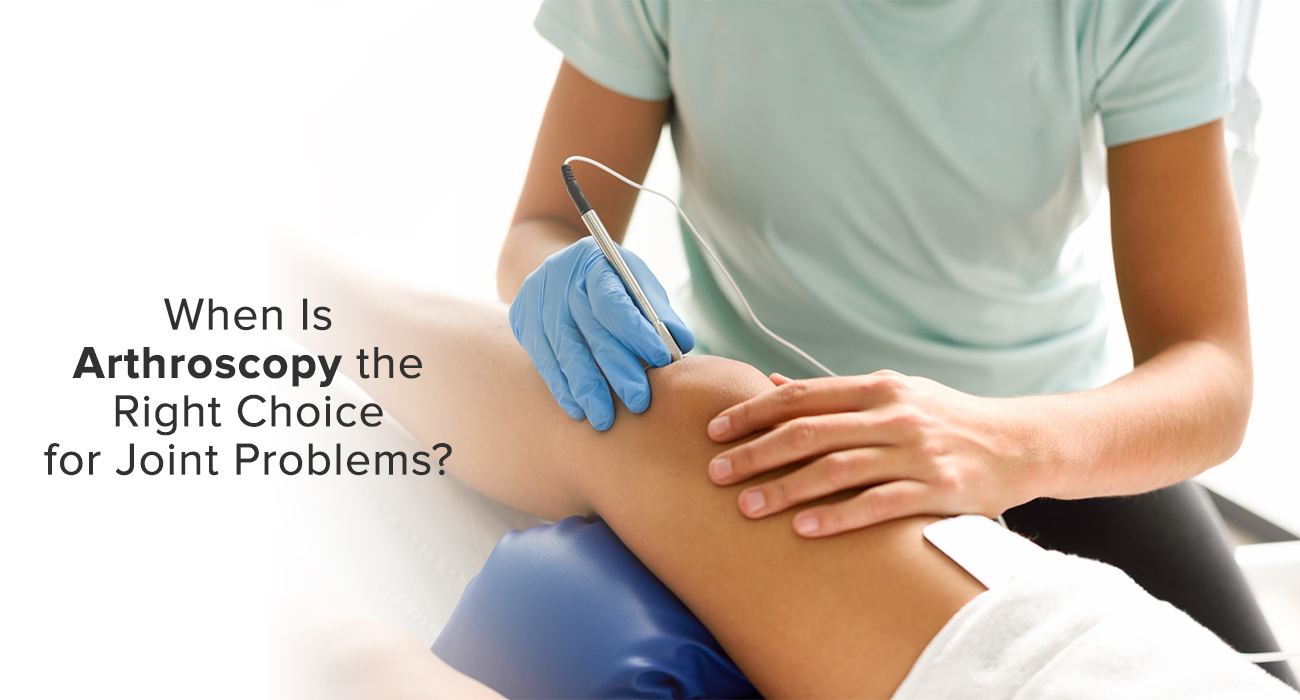10/23/2023
Arthroscopy is an advanced technique that has revolutionized the treatment and management of various joint problems. This blog, by the best doctors for arthroscopy in Jaipur, will help you understand why you should opt for the procedure. Joint issues, which are extremely common nowadays, can give rise to pain, discomfort, and restricted movement, all of which can affect one’s ability to take part in normal day-to-day activities and perform simple tasks like climbing stairs.
The term "arthroscopy," which comes from the Greek words "arthro" (joint) and "skopein" (to look), refers to a minimally invasive surgical technique that uses an arthroscope, a thin, flexible tube that has a tiny camera and light source attached to it. The technique allows the doctors to thoroughly examine the joints without making long incisions. It is especially helpful in the diagnosis and treatment of a wide range of joint-related conditions, such as those involving the knee, shoulder, hip, ankle, and wrist.
1. Damage to Cartilage: The smooth, protecting tissue that envelops the ends of bones is called cartilage. It may deteriorate or sustain injury over time, resulting in discomfort and decreased joint function. When it comes to treating cartilage issues, arthroscopy is a great option since it enables doctors to evaluate the degree of damage and carry out treatments like cartilage debridement or repair.
2. Problems with Ligaments and Tendons: Damage to ligaments and tendons is frequently seen in joints such as the shoulder and knee. Injured ligaments and tendons can be rebuilt or repaired via arthroscopy. For example, arthroscopic procedures can be used to repair ruptured anterior cruciate ligaments (ACLs) in the knee, which leads to shorter recovery times and less scarring than open surgery.
3. Loose Body Removal: Inflammation and discomfort can occasionally result from tiny bone or cartilage pieces that break off inside a joint. Best doctors for arthroscopy suggest that by using the technique, it becomes easier to find and remove these loose bodies, which in turn helps in reducing pain and regaining normal joint function.
4. Synovitis and Inflammation: Experts specializing in arthroscopy in Jaipur suggest that the procedure can be used to diagnose and treat synovitis, which is a condition marked by the inflammation of the joint lining. By lowering discomfort and swelling, this surgery can improve the patient's quality of life.
5. Minimally Invasive: One of arthroscopy's main benefits is that it requires very little physical access. Small incisions are used during arthroscopy, which minimizes discomfort, scarring, and recovery time compared to open surgery, which requires larger incisions and longer recovery periods. For individuals looking for less intrusive treatment choices, it's a great option.
6. Recuperation Period: Compared to open surgery, arthroscopic procedures usually require less time to recover from. Patients who have hectic schedules or are sports might benefit most from being able to return home the same day as the operation and resume their regular activities sooner.
7. Knee Problems: The most frequent condition addressed using arthroscopy is knee pain. Conditions including meniscal tears, ligament damage, and patellar (kneecap) issues are commonly diagnosed and treated using it. A lot of professional players have had their sports-related ailments treated with arthroscopic knee surgery.
8. Shoulder Issues: Rotator cuff tears, labral tears, and frozen shoulder are among the conditions that can be treated by shoulder arthroscopy. Because of its accuracy and little tissue damage, it is frequently the recommended option for shoulder problems.
9. Hip and Other Joints: The hip, ankle, and wrist are among the other joints that can be treated with arthroscopy. It can be helpful in the diagnosis and treatment of ailments such as wrist ligament damage, ankle instability, and hip impingement.
As per the best doctors for arthroscopy, it is an effective and multipurpose technique in orthopaedic treatment. With less invasiveness and quicker recovery periods, it offers a way to identify and address a variety of joint issues. This is an active form of treatment which is beneficial for the patient as well as their family for a speedy recovery.

